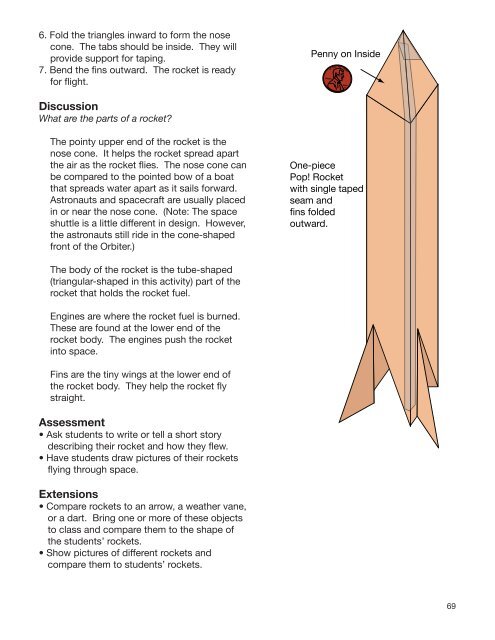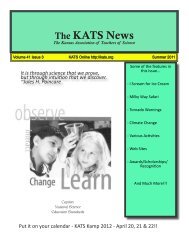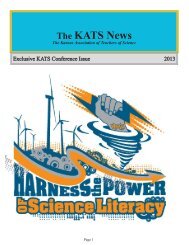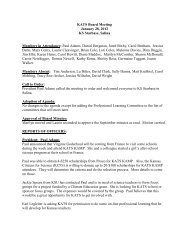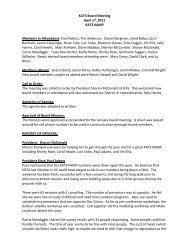You also want an ePaper? Increase the reach of your titles
YUMPU automatically turns print PDFs into web optimized ePapers that Google loves.
6. Fold the triangles inward to form the nose<br />
cone. The tabs should be inside. They will<br />
provide support for taping.<br />
7. Bend the fins outward. The <strong>rocket</strong> is ready<br />
for flight.<br />
Discussion<br />
What are the parts of a <strong>rocket</strong>?<br />
The pointy upper end of the <strong>rocket</strong> is the<br />
nose cone. It helps the <strong>rocket</strong> spread apart<br />
the air as the <strong>rocket</strong> flies. The nose cone can<br />
be compared to the pointed bow of a boat<br />
that spreads water apart as it sails forward.<br />
Astronauts and spacecraft are usually placed<br />
in or near the nose cone. (Note: The space<br />
shuttle is a little different in design. However,<br />
the astronauts still ride in the cone-shaped<br />
front of the Orbiter.)<br />
The body of the <strong>rocket</strong> is the tube-shaped<br />
(triangular-shaped in this activity) part of the<br />
<strong>rocket</strong> that holds the <strong>rocket</strong> fuel.<br />
Engines are where the <strong>rocket</strong> fuel is burned.<br />
These are found at the lower end of the<br />
<strong>rocket</strong> body. The engines push the <strong>rocket</strong><br />
into space.<br />
Fins are the tiny wings at the lower end of<br />
the <strong>rocket</strong> body. They help the <strong>rocket</strong> fly<br />
straight.<br />
Assessment<br />
• Ask students to write or tell a short story<br />
describing their <strong>rocket</strong> and how they flew.<br />
• Have students draw pictures of their <strong>rocket</strong>s<br />
flying through space.<br />
Extensions<br />
• Compare <strong>rocket</strong>s to an arrow, a weather vane,<br />
or a dart. Bring one or more of these objects<br />
to class and compare them to the shape of<br />
the students’ <strong>rocket</strong>s.<br />
• Show pictures of different <strong>rocket</strong>s and<br />
compare them to students’ <strong>rocket</strong>s.<br />
69


